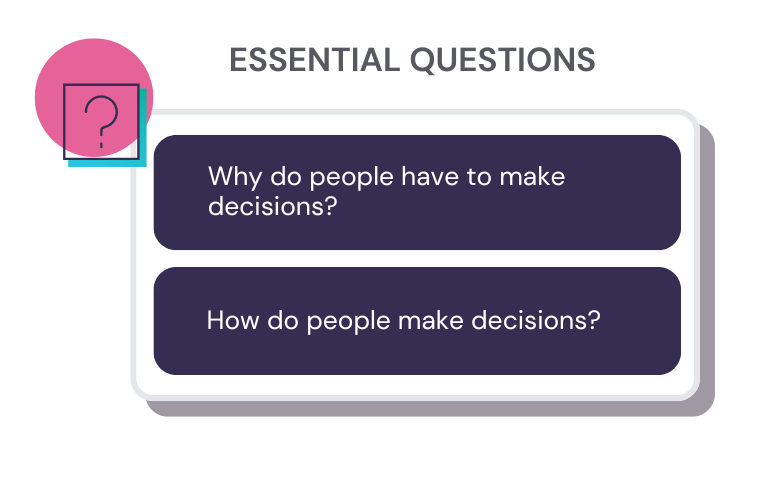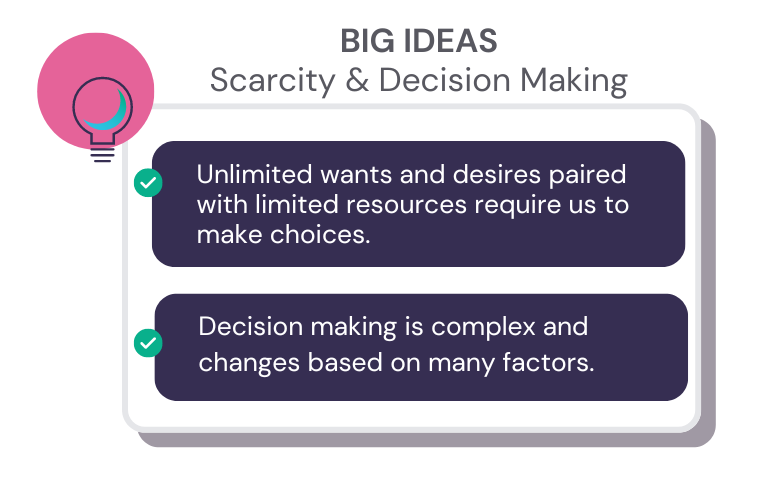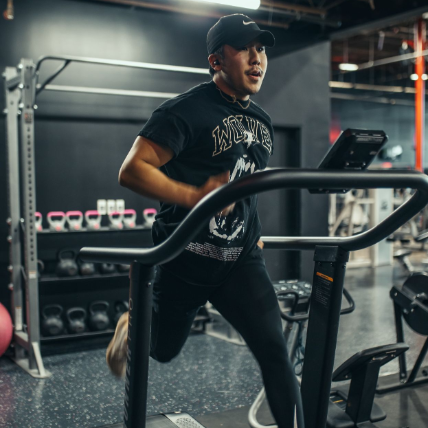Unit 1: Economic Foundations
About Unit 1
Curriculum Gold Award recipient from the National Association of Economic Educators

New to our curriculum? Start here.


Lessons build on one another and are designed to be used sequentially. If you plan to use one of the lessons in isolation, review the Unit Overview document.
Planning to use all of Unit 1? We've created a Student Handout Packet for members. Log in and access at bottom of page.
1.1 Semester Pre-Assessment
A no-stakes test of economic literacy is given to establish a baseline of economic knowledge and repeated at the end of the semester to determine growth.
Members only. Log in and access at bottom of page.
1.2 Packing for a River Trip: An Introduction to Economics
Planning a two-week river trip, students learn how economic principles, especially scarcity, influence decision making.
"The students were engaged in the lesson for the whole class period." - James K., Florida
1.3 Thinking Like an Economist: Part 1
Students learn about the roles of economists and how to apply the first two principles of economic thinking (cost-benefit and opportunity cost) to decision making.
"I absolutely loved the activator for this lesson & the emphasis on economics being a social science ... Overall, the lesson was very easy to implement." - Aaron M., Indiana
1.4 Thinking Like an Economist: Part 2
Students apply two more economic thinking principles (marginal and interdependence) to decision making.
1.5 Exploring Diminishing Marginal Utility
Participating in an economic experiment with chewing gum, students learn about the scientific method and diminishing marginal utility.
1.6 Complexities of Decision Making
Cognitive biases like present bias, sunk cost fallacy, and framing effect are analyzed through real-world examples and personal experiences to understand their impact on decision making.
"I liked the lesson. Very engaging and not boring. I liked how interactive [the] handout [was] with a fun doodle." - Student, AZ
1.7 Review to Date
Key concepts from Unit 1 are reviewed through station rotations to prepare for the summative assessment and identify areas needing further study.
"Lesson plan is great, gets kids interacting and moving." -Lianne K., New Jersey
1.8 Introduction to the Production Possibilities Frontier (PPF)
Students produce tiger and panda bookmarks and use data from the simulation to create a production possibilities frontier.
"I loved this lesson and so did my students. I am trying to incorporate more student driven learning in my classroom and this worked great!" -Anne R., North Carolina
1.9 Adding Complexity to the PPF: Part 1
Factors of production, opportunity costs, and shifts in the PPF are explored to develop a deeper understanding of the production possibilities frontier.
"My students loved how interactive they were able to be with their peers." - Sara H., Alabama
1.10 Adding Complexity to the PPF: Part 2
Building on previous lessons, students link the PPF to key economic concepts and practice interpreting and generating PPF models.
"Great discussion among students, lesson uncovered some concepts that are still not clear to students." - Cheryl G., GA
1.11 Review and Assessment Preview*
To review concepts from Unit 1 students play a Taboo-inspired word game. Then they'll preview the Unit 1 summative assessment.
"I was pleasantly surprised by how well my students took to the activity. They'd never played Taboo before, but a quick explanation and off they went." -Educator in SC
*To access: Log in as member and scroll to the bottom of page.
1.12 Principles of Economic Thinking in the News*
In this lesson students complete a summative assessment where they relate one of the principles of economic thinking to a news story.
*To access: Log in as member and scroll to the bottom of page.
Contact Kathleen Cusack with questions at Kathleen@econiful.org.

This work is licensed under a Creative Commons Attribution-NonCommercial-ShareAlike 4.0 International License.













